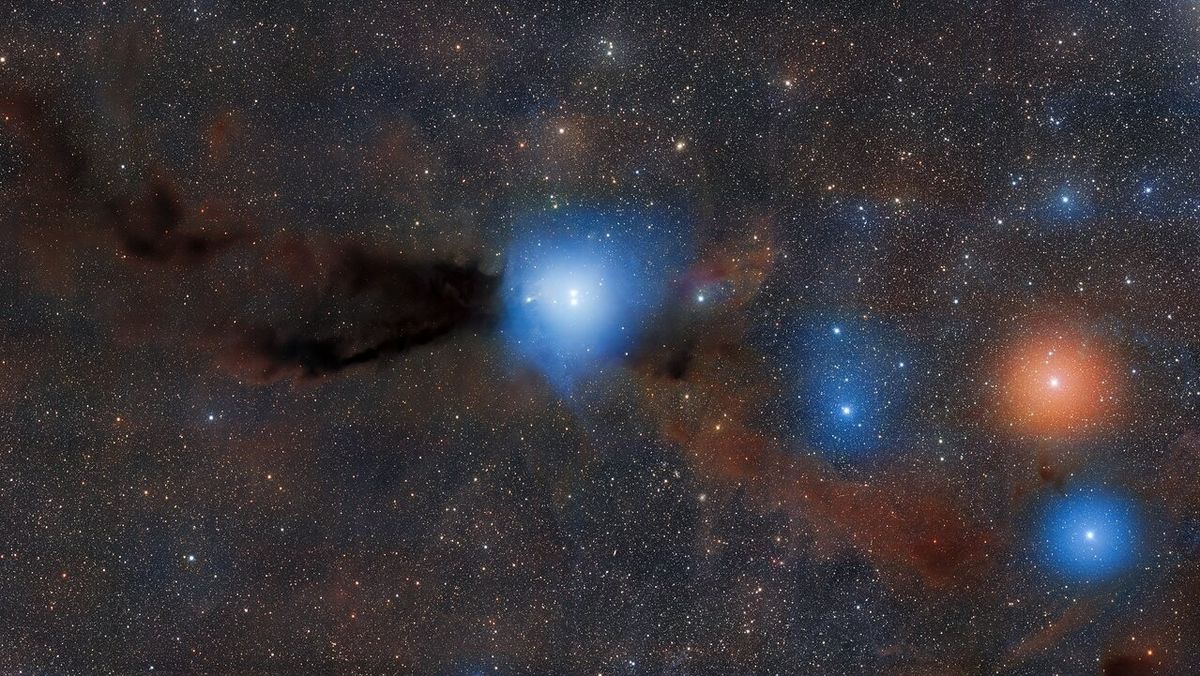Infant stars burst out of their cosmic cribs in a violent stellar nursery (photo)
By Robert Lea published 1 day ago
Astronomers saw the two protostars erupt from their natal cocoons of gas and dust in the star-forming interstellar cloud Lupus 3.

two bright spheres of light in the center of the image are surrounded by a hazy blue glow, piercing through a dark cloud of gas and dust.
Two protostars burst from their cocoons of gas and dust. (Image credit: CTIO/NOIRLab/DOE/NSF/AURA/ T.A. Rector (University of Alaska Anchorage/NSF’s NOIRLab) Image Processing: D. de Martin & M. Zamani (NSF’s NOIRLab))
Astronomers have witnessed two infant stars in a vast stellar nursery burst from their natal cribs of gas and dust. The newly formed stars, or "protostars," are located at the heart of the massive star-birthing interstellar cloud called Lupus 3.
The observations of the heart of Lupus 3 were made with the Dark Energy Camera located at the Cerro Tololo Inter-American Observatory in Chile and could help shed more light on the mystery of star formation.
As they made their escape from the matter that helped form them, the protesters illuminated the reflection nebula Bernes 149. Reflection nebulas are clouds of interstellar dust that aren't heated enough by light from surrounding stars to emit radiation on their own but can, as the name suggests, reflect light from these stars, becoming stunning cosmic beacons alerting astronomers to infant stars.
The blazing blue stars in Lupus 3, which is located around 500 light-years from Earth, are known as HR 5999 and HR 6000 and give Bernes 149 a bright blue aura. This is in stark contrast to the dark nebula of gas from which the stars were born, Lupus 3, which can be seen as an ominous black cloud in the Dark Energy Camera image.
More:
https://www.space.com/infant-stars-burst-from-stellar-nursery-nebula-lupus-3-photo
